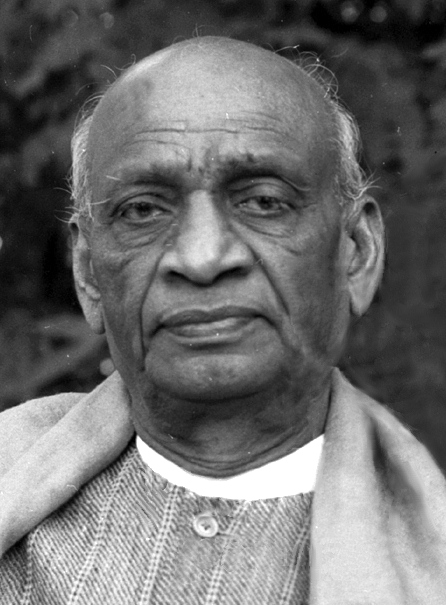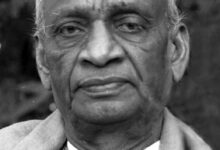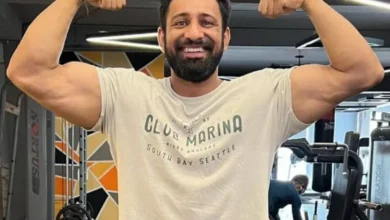Sardar Vallabhbhai Patel Biography, Wife, Net Worth, Cars, Career, Children, Death
Sardar Vallabhbhai Patel, fondly known as the “Iron Man of India,” was a towering figure in India’s struggle for independence and its subsequent unification. Born on October 31, 1875, in Nadiad, Gujarat, Patel’s journey from a self-taught lawyer to the first Deputy Prime Minister and Home Minister of independent India is a testament to his resilience, determination, and unwavering commitment to national unity.
Profile
| Category | Details |
|---|---|
| Full Name | Vallabhbhai Jhaverbhai Patel |
| Famous As | Sardar Vallabhbhai Patel |
| Date of Birth | 31 October 1875 |
| Place of Birth | Nadiad, Gujarat, India |
| Date of Death | 15 December 1950 |
| Place of Death | Mumbai, Maharashtra, India |
| Profession | Lawyer, Politician, Freedom Fighter |
| Education | Middle Temple, London (Law Studies) |
| Political Party | Indian National Congress |
| Key Positions | – First Deputy Prime Minister of India – First Home Minister of India |
| Nickname | Iron Man of India |
| Major Contributions | – Unification of over 560 princely states – Role in Indian independence |
| Award | Bharat Ratna (1991, posthumous) |
| Memorial | Statue of Unity (World’s tallest statue, unveiled in 2018 in Gujarat) |
Early Life and Education
Vallabhbhai Jhaverbhai Patel was born into a middle-class agricultural family of the Leuva Patidar community in Nadiad, under the Bombay Presidency (now Gujarat). His father, Jhaverbhai Patel, was a farmer and a veteran of the 1857 Sepoy Mutiny, having served in the army of Rani Laxmibai of Jhansi. His mother, Ladbai, was a spiritually inclined woman who instilled traditional Hindu values in her six children, of whom Vallabhbhai was the fourth. The family lived modestly in Karamsad, where Vallabhbhai spent his early years working in the fields alongside his father.
Patel’s early education took place in Gujarati-medium schools in Karamsad, Petlad, and Borsad. Known for his bold personality, he once organized a student revolt against a corrupt teacher, showcasing his leadership qualities even as a young boy. Despite financial constraints, Patel was determined to pursue a career in law. He completed his matriculation at the age of 22, later than many of his peers, largely through self-study with borrowed books. His ambition to become a barrister led him to save money diligently while practicing as a district pleader in Gujarat.
In 1910, at the age of 35, Patel traveled to London to study at the Middle Temple Inn. Demonstrating remarkable academic prowess, he completed the 36-month law course in just 30 months, topping his class. He returned to India in 1913 and established a successful legal practice in Ahmedabad, earning a reputation as a skilled criminal lawyer known for his sharp intellect and ability to challenge authority.

Sardar Vallabhbhai Patel Wife and Children
In 1891, at the age of 16, Vallabhbhai married Jhaverba Patel, as was customary in arranged marriages of the time. The couple had two children: a daughter, Maniben Patel (born in 1903), and a son, Dahyabhai Patel (born in 1905). Jhaverba, described as a supportive partner, managed the household while Vallabhbhai focused on his legal career. Tragically, Jhaverba fell seriously ill in 1909 and passed away in a Bombay hospital after treatment. Her death was a significant loss for Patel, who chose not to remarry, dedicating himself to raising his children and advancing his career.
Maniben Patel grew up to be a prominent activist, deeply influenced by her father’s commitment to the freedom struggle. She joined the Indian National Congress and participated in various non-violent movements, including the Quit India Movement. Dahyabhai Patel, on the other hand, pursued a quieter life, serving as a member of the Indian Parliament later in his career. Patel ensured both children received modern education, sending them to English-medium schools, reflecting his progressive outlook despite his traditional upbringing.
Patel’s personal life was marked by sacrifice and duty. After Jhaverba’s death, he took on the responsibility of single-handedly raising his children while managing a demanding legal practice. His stoic personality and focus on family honor were evident when he allowed his elder brother, Vithalbhai Patel, to travel to England for legal studies in his place, prioritizing family reputation over his own ambitions.
Sardar Vallabhbhai Patel Career
Patel’s legal career began in Godhra, Borsad, and Anand, where he practiced as a district pleader. His move to Ahmedabad in 1913 marked a turning point, as he quickly became one of the city’s most successful barristers. Known for his meticulous preparation and fearless courtroom demeanor, Patel earned significant wealth and respect. However, he rejected lucrative offers from the British government, reflecting his growing disillusionment with colonial rule.
Initially uninterested in politics, Patel’s perspective shifted after meeting Mahatma Gandhi in 1917 at the Gujarat Political Conference in Godhra. Gandhi’s philosophy of non-violent resistance (satyagraha) and his courageous stand during the Champaran Satyagraha in Bihar inspired Patel to join the independence movement. He abandoned his Western attire, adopted khadi, and began aligning himself with Gandhi’s ideology.
Role in the Independence Movement
Patel’s political career took off in 1917 when he was elected Sanitation Commissioner of Ahmedabad. He implemented significant civic reforms, including improving sanitation, water supply, and education, and fought against British-imposed policies. That same year, he became the secretary of the Gujarat Sabha, the regional arm of the Indian National Congress (INC).
Post-Independence Contributions
After India’s independence in 1947, Patel was appointed the first Deputy Prime Minister and Home Minister. His most monumental achievement was the integration of over 560 princely states into the Indian Union. Using a combination of diplomacy, persuasion, and, when necessary, military action (as in Junagadh and Hyderabad), Patel prevented the balkanization of India. His approach, often described as employing “Sama, Dama, Dand, and Bhed” (conciliation, compensation, punishment, and division), ensured a unified nation.
As Home Minister, Patel also established the All India Services, which he called the “Steel Frame” of India’s administration. He emphasized impartiality and integrity in civil services, laying the foundation for modern India’s bureaucratic system. His handling of communal violence during the Partition, including organizing relief for refugees, showcased his administrative acumen.
Patel’s differences with Jawaharlal Nehru, particularly over socialism and foreign policy, were notable. While Nehru favored a socialist model, Patel advocated for industrialization and wealth creation before redistribution. Despite these differences, Patel remained loyal to the Congress and worked tirelessly for national stability.
Sardar Vallabhbhai Patel Net Worth
There is no precise record of Sardar Patel’s net worth, as financial documentation from his era is scarce. As a successful barrister in Ahmedabad, Patel amassed considerable wealth, which he used to support his family, fund his children’s education, and travel to England for his studies. However, upon joining the independence movement, he embraced a frugal lifestyle, adopting khadi and forgoing material comforts. His wealth was largely redirected toward political and social causes, including funding Congress activities and supporting satyagraha campaigns. Unlike modern politicians, Patel’s focus was on service rather than personal enrichment, and he left behind no significant personal fortune.
Sardar Vallabhbhai Patel Cars and Lifestyle
In the early 20th century, car ownership was rare in India, especially among middle-class families like Patel’s. As a successful barrister, Patel may have had access to vehicles such as horse-drawn carriages or early automobiles like the Ford Model T, which were status symbols in colonial India. However, after joining the independence movement, Patel adopted a minimalist lifestyle aligned with Gandhian principles. He traveled extensively by train or on foot during satyagraha campaigns, reflecting his commitment to simplicity. As Deputy Prime Minister, he likely used government-provided vehicles, such as the Hindustan Ambassador (introduced later), for official duties, but there are no records of personal car ownership. His lifestyle remained austere, focused on public service rather than luxury.
Sardar Vallabhbhai Patel Health and Death
Patel’s health began deteriorating in the summer of 1950 due to the immense stress of his responsibilities. On December 15, 1950, he suffered a massive heart attack and passed away at Birla House in Bombay (now Mumbai) at the age of 75. His death was mourned across India, with tributes pouring in from political leaders, civil servants, and the public. The nation recognized his unparalleled contribution to India’s unity and governance.
READ ALSO: Rajat Dalal Biography, Net Worth, Wife, Cars, Career
FAQs
Who was Sardar Vallabhbhai Patel?
Sardar Vallabhbhai Patel was an Indian freedom fighter, lawyer, and statesman who played a key role in the unification of India after independence in 1947.
What role did he play in the Indian independence movement?
He was a senior leader of the Indian National Congress, closely associated with Mahatma Gandhi, and led movements like the Bardoli Satyagraha.
Was he the first Deputy Prime Minister of India?
Yes, Sardar Patel served as the first Deputy Prime Minister and first Home Minister of independent India.
When did Sardar Patel die?
He passed away on December 15, 1950, in Mumbai, India.
Did he receive any national honors?
Yes, he was posthumously awarded the Bharat Ratna, India’s highest civilian award, in 1991.





